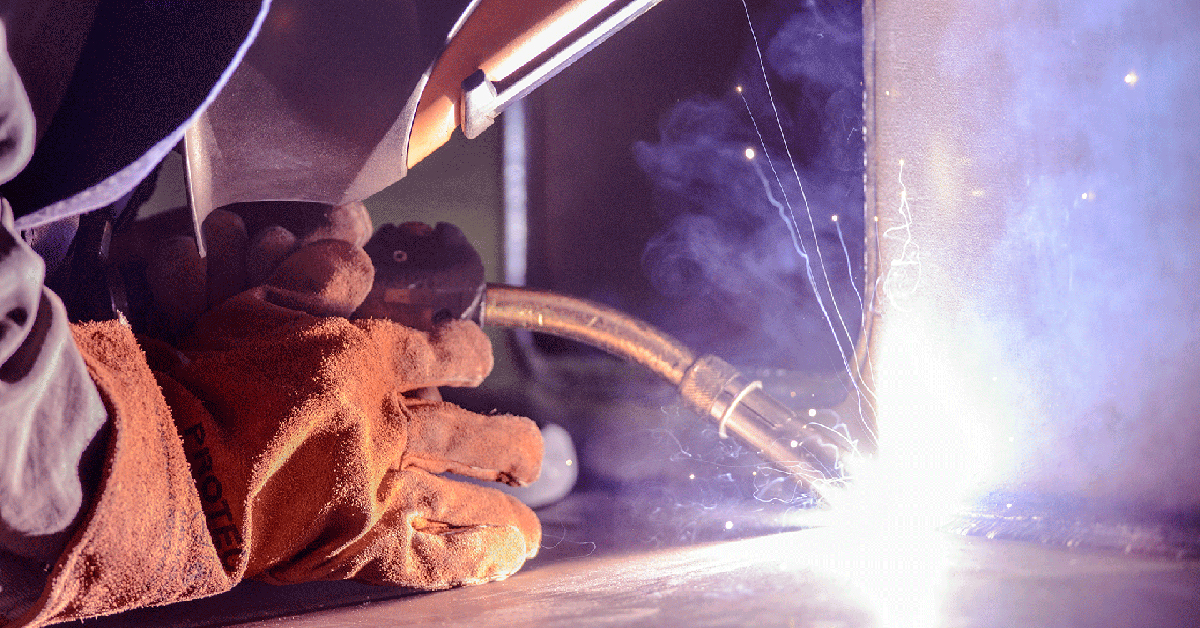Complete Guide to Preventing Weld Undercut: Tips and Techniques
Complete Guide to Preventing Weld Undercut: Tips and Techniques
Blog Article
A Comprehensive Guide to Identifying, Stopping, and Correcting Undercut Welding Troubles in Your Welding Tasks
In the world of welding, coming across undercut problems is a common challenge that can endanger the architectural stability and overall top quality of your welding tasks. Comprehending the source behind undercut welding, being able to properly identify it in your welds, and applying reliable preventative actions are essential abilities for any type of welder. Furthermore, having the understanding and methods to rectify undercut problems when they do occur can make a considerable difference in the final result of your welding endeavors. Remain tuned as we discover the important components of identifying, preventing, and repairing undercut welding issues, supplying you with beneficial insights and techniques to raise your welding abilities to the following level.
Common Reasons For Undercut Welding
Undercut welding, a common issue in welding processes, can be brought on by numerous aspects that need to be thoroughly identified and addressed to ensure the honesty of the weld joint. Among the primary reasons for undercut welding is too much warm input. When the welding parameters, such as voltage, current, or take a trip speed, are not correctly established, a too much amount of warmth can be produced. This excess heat leads to the melting and succeeding elimination of the base product along the edges of the weld joint, developing a groove referred to as undercut.
Another common source of undercut welding is incorrect welding strategy. Inadequate adjustment of the welding torch or weapon, incorrect angle or distance in between the torch and the workpiece, or inconsistent travel rate can all contribute to the formation of undercut. In addition, using the wrong welding consumables or electrode dimension for a particular joint setup can bring about undercut issues. Determining these source and carrying out rehabilitative steps is vital in preventing and remedying undercut welding troubles in welding projects.
Identifying Undercut in Welds

To recognize undercut accurately, proper lighting and zoom tools are important to evaluate the weld joint thoroughly. Using tools such as a welding scale or a magnifying glass can help in spotting even the smallest undercut imperfections. Additionally, running a finger or a fingernail along the weld joint can sometimes disclose undercut, as the surface might feel uneven or have a dip where the undercut exists.
Preventive Procedures for Undercut
Having a deep understanding of the causes of undercut in welds enables for the implementation of reliable preventative procedures to maintain weld high quality and stability. These setups should be enhanced to see it here prevent too much warm input, which can lead to undercut formation.

Strategies for Fixing Undercut

To deal with undercut problems properly, welders can utilize certain strategies intended at correcting the flaw and recovering the integrity of the weld joint. One technique is to adjust the welding criteria, such as the voltage, present, and travel speed, to guarantee appropriate warmth input and fusion. Enhancing the welding current or lowering the traveling rate can help complete the undercut. Furthermore, transforming the welding technique from a push to a drag or vice versa can also help lessen undercut.
An additional strategy is to make use of a weaving movement while welding to make sure correct sidewall fusion and fill in the undercut. By oscillating the welding arc from side to side within the weld joint, the welder can deposit extra filler product right into the undercut areas, successfully removing the problem.
Furthermore, grinding out the undercut and rewelding the joint can be a sensible solution for extra extreme undercut issues - Preventing weld undercut. This procedure entails removing the undercut section, preparing the base steel, and afterwards rewelding the joint with appropriate welding criteria and strategies to avoid undercut from persisting

Specialist Tips for Staying Clear Of Undercut
Utilizing proper welding methods and keeping control over essential welding specifications are important techniques for welders intending to protect against undercut in their weld joints. Furthermore, choosing the proper welding process and filler steel for the particular application can help stop undercut. Maintaining a constant travel speed throughout the welding process is another crucial idea to stop undercut.
Verdict
Finally, recognizing, avoiding, and repairing undercut welding troubles in your welding projects is essential for guaranteeing strong and resilient welds. Preventing weld undercut. By understanding the usual root causes of undercut, having the ability to determine it in welds, carrying out safety nets, and making use of appropriate strategies for fixing undercut, you can stay clear get redirected here of possible problems and create high-quality welds. Adhering to professional suggestions for avoiding undercut can aid you enhance your welding skills and generate much better results in your tasks
Undercut welding, a typical issue in welding procedures, can be caused by you can look here numerous aspects that need to be meticulously determined and addressed to make sure the integrity of the weld joint. In addition, running a finger or a fingernail along the weld joint can occasionally expose undercut, as the surface area may really feel uneven or have a dip where the undercut exists.
Making use of appropriate welding strategies and preserving control over vital welding specifications are crucial methods for welders aiming to stop undercut in their weld joints.In conclusion, determining, protecting against, and taking care of undercut welding troubles in your welding projects is critical for making sure durable and strong welds. By recognizing the usual causes of undercut, being able to determine it in welds, applying preventive steps, and making use of correct techniques for taking care of undercut, you can stay clear of possible issues and create premium welds.
Report this page